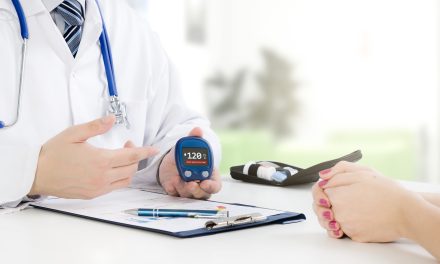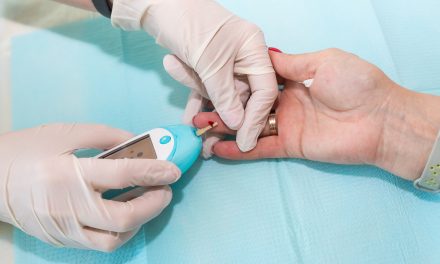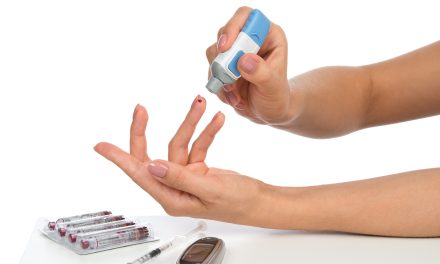Juvenile diabetes, also known as type 1 diabetes, is an autoimmune disorder affecting children and adolescents. It occurs when the immune system mistakenly destroys the insulin-producing cells (beta cells) in the pancreas, leading to a deficiency in insulin production. This chronic condition requires lifelong management and care to maintain blood sugar levels within a target range and prevent potential associated complications.

The diagnosis of juvenile diabetes often begins with recognizing the signs and symptoms, such as increased thirst, frequent urination, weight loss, and fatigue. Following diagnosis, a comprehensive treatment plan is developed, incorporating insulin therapy essentials, diet and nutrition management, physical activity, and regular monitoring of blood sugar levels. Alongside medical treatment, it is essential to address the psychosocial aspects of living with the disease, providing support and resources to the child and their caregivers.
Key Takeaways
- Juvenile diabetes is a lifelong autoimmune disorder requiring careful management of insulin, diet, and physical activity.
- Early recognition of symptoms and prompt diagnosis are crucial for effective treatment and prevention of complications.
- Comprehensive support for patients and their families, including psychosocial assistance, plays a vital role in disease management.
Understanding Type 1 Diabetes
Pathophysiology and Risk Factors
Type 1 diabetes, also known as juvenile diabetes, is an autoimmune disorder where the body’s immune system mistakenly attacks the pancreas’s insulin-producing beta cells. This results in little to no insulin production, which is essential for regulating blood sugar levels. Various risk factors are involved in developing type 1 diabetes, including genes, ethnicity, and family history. Individuals with a family history of diabetes, especially from a parent or sibling, have a higher risk of developing the condition. Additionally, specific ethnicities, such as Caucasians, have an increased risk compared to other groups.
Signs and Symptoms
Common signs and symptoms of type 1 diabetes in children include:
- Excessive thirst
- Frequent urination
- Increased hunger
- Unintended weight loss
- Fatigue
- Irritability or mood changes
- Blurry vision
Awareness of these symptoms is crucial to ensure early detection and proper management of the condition.
Genetic and Environmental Triggers
Genetic factors play a role in developing type 1 diabetes, as specific genes are associated with an increased risk for the disease. However, not everyone carrying these genes will develop diabetes, indicating that environmental factors are also involved. Viruses, such as enteroviruses, may trigger the immune system’s attack on the pancreas’ beta cells. More research is needed to fully understand the interaction between genetic and environmental factors in the development of type 1 diabetes.
Footnotes
Diagnosis of Juvenile Diabetes
Blood and Urine Tests
Diagnosing juvenile diabetes involves conducting various blood and urine tests to confirm the presence of high blood sugar levels. One standard blood test is the A1C test, which measures your child’s average blood sugar level over the past 2-3 months. An A1C level of 6.5% or higher on two separate tests indicates diabetes.
Another option is the fasting blood sugar test, which requires a blood sample after the child hasn’t eaten for at least 8 hours or overnight. A fasting blood sugar level of 126 mg/dL (7.0 mmol/L) or higher suggests type 1 diabetes.
Urine tests are also essential in diagnosing juvenile diabetes. They help detect the presence of ketones, which are substances produced when the body breaks down fats due to insulin insufficiency. High levels of ketones in the urine indicate that your child’s body is having trouble using glucose for energy, and maybe a sign of juvenile diabetes.
Identifying Autoantibodies
Apart from blood and urine tests, the presence of autoantibodies can help diagnose juvenile diabetes. To do this, an antibody test can be performed to check for autoantibodies that target specific components of the insulin-producing cells in the pancreas.
Detecting these autoantibodies can differentiate between type 1 and type 2 diabetes, as they’re typically only present in people with type 1 diabetes. Additionally, identifying autoantibodies allows for the early detection and initiation of adequate treatment, which is crucial for managing the condition and preventing complications.
In summary, the diagnosis of juvenile diabetes involves a combination of blood tests, urine tests, and the detection of autoantibodies. These tests help to confirm the presence of high blood sugar levels, differentiate between diabetes types, and enable the implementation of appropriate treatment measures.
Footnotes
Insulin Therapy Essentials
Insulin therapy is the mainstay of treatment for type 1 diabetes mellitus in children and adolescents. It aims to replace the deficient hormone and achieve normoglycemia1. There are several types of insulin and methods of delivery to consider, as well as advancements in technology that have made managing juvenile diabetes more accurate and effective.
Insulin Types and Administration
There are various types of insulin, each with different durations of action and onset. They can be broadly classified into three categories: rapid-acting, intermediate-acting, and long-acting insulin. Rapid-acting insulin, such as lispro, aspart, and glulisine, has an onset of around 15 minutes and lasts for 3-4 hours. Intermediate-acting insulin, such as NPH, has an onset of 1-2 hours and lasts for 12-18 hours. Long-acting insulin, such as glargine and detemir, has an onset of 1-2 hours and lasts for more than 24 hours.
Insulin administration can be done via multiple methods, including:
- Injections: Most commonly, insulin is administered via subcutaneous injections, typically in the fatty tissue of the abdomen, thigh, or upper arm. It’s essential for patients to rotate injection sites to prevent lipoatrophy.
- Insulin pumps: These are devices that deliver a continuous supply of rapid-acting insulin throughout the day and night, either through a tube or patch to a cannula inserted under the skin. The insulin pump imitates the body’s natural insulin secretion, making it more precise and adjustable according to the individual’s need.
Advancements in Insulin Delivery
Recent advancements in insulin delivery systems and monitoring have significantly improved the management of juvenile diabetes.
- Continuous glucose monitoring (CGM): These systems track blood glucose levels continuously throughout the day, providing real-time information and trends. They can help prevent sudden highs or lows and allow for better fine-tuning of insulin therapy.
- Smart insulin pens: These devices can track and record insulin doses, providing reminders and logging injection history. This helps both patients and healthcare providers to better manage the insulin therapy and adjust doses accordingly.
- Closed-loop systems: Also known as the artificial pancreas, closed-loop systems integrate insulin pumps with CGM, automatically adjusting insulin delivery based on glucose levels. This technology allows for better glucose control and reduced risk of complications in type 1 diabetes patients.
In conclusion, insulin therapy is critical for the successful management of juvenile diabetes. Understanding the various types of insulin, and their administration, and incorporating advancements in technology can help children and adolescents achieve better glycemic control.
Diet and Nutrition Management
Carbohydrate Counting
For children with juvenile diabetes, proper diet and nutrition management plays a crucial role in maintaining appropriate blood sugar levels. One essential aspect of dietary management is carbohydrate counting. Carbohydrates directly impact blood sugar levels, making it vital for children and their caregivers to monitor intake accurately.
A registered dietitian nutritionist can provide personalized guidance to help plan a balanced diet that meets the child’s individual needs. When incorporating carbohydrate counting into everyday meal planning, it’s essential to consider the total amount of carbohydrates consumed, as well as the type of carbohydrates (complex or simple).
Here are some key points to consider when counting carbohydrates:
- Understand the difference between complex and simple carbohydrates.
- Complex carbohydrates (found in whole grains, fruits, vegetables, and legumes) release sugar slowly and steadily, helping to maintain more consistent blood sugar levels.
- Simple carbohydrates (found in sugary foods, candies, and processed foods) release sugar quickly, leading to rapid blood sugar spikes.
- Read food labels to determine the total amount of carbohydrates in each food item. This information is typically listed under “Total Carbohydrates” on the nutrition facts label.
- Measure portion sizes accurately using measuring cups, food scales, or other tools. This ensures the correct calculation of carbohydrate grams consumed.
- Track carbohydrate intake throughout the day to ensure appropriate blood sugar management. Many tools and apps are available for easy tracking.
Following a nutritious diet and practicing carbohydrate counting are essential components in managing juvenile diabetes. Collaborating with a registered dietitian nutritionist, understanding food labels, and accurately measuring portion sizes can greatly improve overall blood sugar control and contribute to a healthier lifestyle for children with diabetes.
Tracking and Monitoring Diabetes

Effectively managing juvenile diabetes requires consistent tracking and monitoring of blood glucose levels. There are several methods to accomplish this, including continuous glucose monitors, blood glucose meters, and various blood sugar tests. These tools can help maintain optimal blood sugar levels and prevent complications.
Continuous Glucose Monitors and Meters
Continuous Glucose Monitors (CGMs) are wearable devices that provide real-time information on glucose levels throughout the day and night. They work by measuring glucose in the interstitial fluid under the skin and displaying the information on a screen or smartphone app. CGMs can help detect trends in blood sugar levels and alert the user when their levels are too high or too low. Some advanced systems can even integrate with insulin pumps to adjust insulin delivery automatically. More information on CGMs can be found on the Mayo Clinic website.
Blood glucose meters are another option for measuring blood sugar levels. These handheld devices require a small sample of blood, typically obtained through a fingerstick. The blood is applied to a test strip, which the meter then analyzes to calculate the glucose concentration. Meters can store readings, allowing individuals and healthcare providers to review trends and adjust treatment plans accordingly.
In addition to using monitoring tools, there are three primary blood sugar tests utilized in diabetes management:
- A1C test: This blood test provides a 2-3 month average of blood sugar levels. An A1C level of 6.5% or higher on two separate tests indicates diabetes.
- Fasting blood sugar test: A blood sample is taken after the individual hasn’t eaten for at least 8 hours or overnight. A fasting blood sugar level of 126 mg/dL (7.0 mmol/L) or higher suggests type 1 diabetes.
- Random blood sugar test: This test measures blood sugar levels at any time, regardless of when the person last ate. A random blood sugar level of 200 mg/dL (11.1 mmol/L) or higher may indicate diabetes.
It’s important to use a combination of these methods to monitor and manage juvenile diabetes effectively. Continuous glucose monitors and blood glucose meters can provide real-time information to help detect and respond to fluctuations in blood sugar levels, while tests such as the A1C, fasting, and random blood sugar tests offer a broader view of overall blood sugar management. Developing a routine for monitoring and adjusting treatment plans is crucial for maintaining optimal glucose levels and preventing complications.
Managing Hypoglycemia and Ketoacidosis

Recognizing and Treating Low Blood Sugar
Hypoglycemia, or low blood sugar, is a common concern for children with diabetes. It occurs when blood glucose levels fall below normal. Some common symptoms of hypoglycemia include sweating, shakiness, dizziness, and confusion. It is crucial for caregivers and children with diabetes to recognize these symptoms and respond promptly.
To treat hypoglycemia, the child should consume a fast-acting carbohydrate source, such as fruit juice, candy, or glucose gel. The following guidelines can help determine the amount of carbohydrates needed:
- Mild hypoglycemia: 10-15 grams of carbohydrates
- Moderate hypoglycemia: 20-30 grams of carbohydrates
- Severe hypoglycemia: 30-50 grams of carbohydrates
After consuming carbohydrates, the child’s blood glucose levels should be monitored and rechecked within 15 minutes. If the blood sugar level remains low, repeat the carbohydrate intake and continue monitoring until the blood sugar returns to a normal range.
Preventing Diabetic Ketoacidosis
Diabetic ketoacidosis (DKA) is a dangerous complication of diabetes that occurs when the body starts breaking down fats for energy instead of glucose, producing ketones as a byproduct. This can lead to acidosis, causing a range of symptoms, such as nausea, excessive thirst, rapid breathing, and confusion. DKA is more common in children with type 1 diabetes but can also occur in those with type 2 diabetes, especially during adolescence.
Preventing DKA involves:
- Regular blood glucose monitoring: Keep track of the child’s blood sugar levels and adjust insulin doses accordingly.
- Checking for ketones: If the child’s blood sugar levels are consistently high, test for ketone buildup using ketone urine strips or a blood ketone meter.
- Managing insulin therapy: Work closely with the healthcare team to ensure the child’s insulin regimen is appropriate for their unique needs, considering factors such as growth, physical activity, and carbohydrate intake.
- Developing a sick-day plan: Illnesses can increase the risk of DKA. Create a plan that outlines how to adjust insulin doses, monitor blood glucose and ketone levels, and when to seek medical help during illness.
Adhering to these steps can minimize the risk of hypoglycemia and ketoacidosis in children with diabetes, ensuring they maintain a healthy blood glucose level and avoid potentially dangerous complications.
Physical Activity in Diabetes Care

Regular physical activity plays a crucial role in managing diabetes, particularly in children and adolescents. Engaging in exercise is beneficial for overall health and can help regulate blood sugar levels, enhance insulin sensitivity, and promote healthy weight management.
Children with diabetes are advised, per the American Academy of Pediatrics (AAP), to participate in at least 60 minutes of daily physical activity starting at the age of 5. This can make a significant difference in their overall health and contribute to better diabetes management.
There are various forms of exercises that can be incorporated into a child’s daily routine:
- Aerobic exercises: Activities such as brisk walking, swimming, or dancing can help improve cardiovascular health and regulate blood sugar levels.
- Strength training: Exercises like bodyweight moves or using resistance bands can boost muscle strength, which contributes to enhanced glucose uptake.
- Flexibility exercises: Stretching or participating in yoga can help maintain flexibility and range of motion, preventing injuries during physical activity.
It is essential for children with diabetes to monitor their blood sugar levels before, during, and after exercise. This practice helps avoid incidents of hypoglycemia or hyperglycemia, ensuring a safe and effective exercise regimen. Adjustments to insulin dosages or carbohydrate consumption should be made based on glucose readings.
Moreover, involving the entire family in physical activities can provide additional support, motivation, and consistency for children with diabetes. Engaging in exercise as a group not only boosts physical health but also serves as an opportunity to bond and instill a lifelong habit of staying active.
In conclusion, incorporating regular physical activity into a child’s routine is essential to diabetes care. By choosing suitable exercises, monitoring blood sugar levels, and promoting a supportive environment, children with diabetes can experience the benefits of exercise and improve their overall well-being.
Psychosocial Aspects and Support

Adjusting to Life with Diabetes
Adapting to juvenile diabetes in childhood and adolescence is a significant challenge that requires not only medical attention but also psychological support. Psychosocial factors play a vital role in living with diabetes, influencing medical outcomes and the overall well-being of young patients. The adjustment process involves recognizing the emotional and behavioral issues that accompany the disease.
Children and adolescents with diabetes often experience feelings of isolation, fear, and depression. Caregivers, educators, and healthcare professionals must acknowledge and address these psychosocial factors. Helping children develop a healthy attitude toward their diagnosis, treatment, and lifelong management of diabetes can have a significant impact on their adjustment process.
In schools, it’s crucial to provide tailored support for children with diabetes. This might involve educating peers, teachers, and staff about the condition to reduce stigma and foster empathy. Schools can adjust routines and grading systems to accommodate medical appointments and management needs.
Accessing Support Services
To ensure optimal psychological well-being, young people with diabetes should be provided with access to support services. These may include:
- Professional counseling and therapy
- Peer support groups
- Diabetes education programs
- Family therapy
These services can help children and adolescents address the emotional and behavioral challenges that they face while living with diabetes. For example, counseling or therapy sessions can help them develop effective coping strategies to manage stress or feelings of anxiety.
Peer support groups, where children interact with others who share similar experiences, can strongly contribute to normalizing their experience and reducing feelings of isolation. Local diabetes associations or healthcare providers can help families find available support groups.
Family therapy can benefit the entire family unit, as diabetes management often requires the support of loved ones. Families can learn how to communicate effectively, reduce stress within the household, and provide appropriate support for their children.
In summary, considering psychosocial factors and offering adequate support services are essential aspects of treating juvenile diabetes. By integrating such services into the overall care plan, children with diabetes can achieve improved life quality and health outcomes.
Complications and Associated Conditions

Acute Complications
Juvenile diabetes, also known as type 1 diabetes, can lead to several acute complications if not properly managed. One of the most common complications is hypoglycemia or low blood sugar levels. Symptoms include dizziness, confusion, and unconsciousness. To prevent hypoglycemia, children and adolescents with type 1 diabetes must monitor their blood sugar levels and adjust their insulin doses accordingly.
Diabetic ketoacidosis (DKA) is another life-threatening complication that occurs when the body cannot utilize glucose for energy and starts breaking down fat instead, leading to the production of ketones. High levels of ketones can make the blood acidic and harm organs. Symptoms of DKA include nausea, vomiting, and rapid breathing. Immediate medical care is necessary to treat DKA.
Long-Term Risks
In addition to acute complications, living with juvenile diabetes carries potential long-term risks. These can be divided into microvascular and macrovascular complications.
Microvascular complications affect small blood vessels and include:
- Retinopathy: Damage to the blood vessels in the retina, leading to blurred vision and, in severe cases, blindness. Annual eye exams are essential for early detection and intervention.
- Nephropathy: Kidney damage that may progress to kidney failure, requiring dialysis or a kidney transplant. Regular screening for kidney function is essential for timely treatment.
- Neuropathy: Nerve damage that can cause numbness, tingling, and pain in extremities, as well as problems with digestion and other bodily functions. Proper foot care and blood sugar management can help prevent neuropathy.
Macrovascular complications affect more prominent blood vessels and increase the risk of:
- Heart disease: Diabetes increases the likelihood of developing heart disease, which can lead to heart attacks and stroke. Maintaining a healthy lifestyle and maintaining blood pressure and cholesterol levels can help minimize the risk.
- Peripheral artery disease: Reduced blood flow to the legs and feet due to narrowing of arteries. This can cause pain, infections, and ulcers and, in severe cases, may require amputation.
To manage the long-term risks associated with juvenile diabetes, it is vital to maintain reasonable blood sugar control, regularly monitor blood pressure, and follow a healthy lifestyle, which includes a balanced diet, regular physical activity, and avoiding smoking. Regular check-ups with healthcare professionals can help identify and address complications early, reducing their impact on the individual’s quality of life.
Emerging Research and Treatments

Beta Cell Replacement and Immunotherapies
In recent years, research has focused on innovative approaches to treating juvenile diabetes. One promising avenue of investigation involves beta cell replacement and immunotherapies. Beta cells are responsible for producing insulin in the pancreas, and their impairment leads to diabetes.
Islet cell transplantation is a potential treatment for diabetes that has shown promise. This procedure involves transplanting functional islet cells from a donor pancreas into a person with diabetes. Researchers are working to improve the success and sustainability of these transplants, which could lead to better glycemic control for affected individuals.
Immunotherapies are being explored to modulate the immune system’s response to beta cells, which could potentially prevent or slow down the autoimmune processes responsible for juvenile diabetes. By addressing the underlying causes of the disease, such treatments offer a promising new angle for managing the condition in young patients.
Gene Therapy and Regenerative Medicine
Gene therapy is another emergent field of research being examined for potential treatments for juvenile diabetes. This technique involves altering or replacing specific genes associated with the condition, providing a possible means for repairing the dysfunctional processes leading to diabetes.
Regenerative medicine focuses on methods to regenerate or repair damaged cells, tissues, or organs. Researchers in this field have been investigating the potential to stimulate the growth of new pancreatic beta cells in diabetic individuals, improving their insulin production capabilities.
Some novel approaches in regenerative medicine include using stem cell therapies as an alternative to pancreatic islet transplantation. Preliminary results from clinical trials using human embryonic stem cell (hESC)-derived beta-like cells have been encouraging.
In conclusion, the emerging research and treatments for juvenile diabetes showcase promising developments that will potentially transform the lives of affected children. Continued efforts in these areas will pave the way for innovative and effective strategies to manage and cure this chronic condition.
Resources and Education

Family and Patient Education
When managing juvenile diabetes, the patient and their family must be well informed. Diabetes education enables patients to make informed decisions about their care and management. Many resources are available to help families learn about the condition and treatment options and assist them in developing self-care skills. For example:
- Books: Numerous books provide comprehensive information on diabetes care and management for children.
- Online forums: Participating in online forums and support groups can help you connect with other parents who have similar experiences and can provide valuable advice.
- Health care team: You can discuss with your child’s health care team to understand more about diabetes management and self-care.
Professional Diabetes Organizations
Several professional organizations focus on diabetes care and education for children and families. Among these, the American Diabetes Association (ADA) is a leading organization that provides critical resources and guidelines for healthcare providers, families, and patients.
Key features of some professional diabetes organizations include:
- Diabetes self-management education (DSME): Many organizations offer DSME programs that help children and their families develop crucial daily skills for managing diabetes. These programs may include information on insulin administration, blood glucose monitoring, and healthy meal planning.
- Guidelines and Best Practices: These organizations often publish guidelines for healthcare professionals to follow to provide the best care for children with diabetes. For example, the ADA releases annual updates with specific standards of medical care that address unique aspects of pediatric diabetes management.
- Support and Advocacy: Many diabetes organizations aim to support families affected by diabetes and advocate for increased awareness, research, and improved access to care.
In conclusion, ensuring that families and patients receive proper diabetes education will help them better manage juvenile diabetes. It is essential to make use of available resources, including books, online forums, and professional diabetes organizations, to stay updated on the latest information and best practices in diabetes care.
Frequently Asked Questions

What are the initial steps following a diagnosis of type 1 diabetes in children?
Upon diagnosis of type 1 diabetes in children, it is crucial to work closely with a healthcare team that specializes in diabetes management. This may include a pediatric endocrinologist, diabetes educator, or dietitian Mayo Clinic. The child will be educated on daily blood sugar monitoring, insulin administration, and recognizing symptoms of high and low blood sugar levels.
Can type 1 diabetes be managed with medication, and what options are available?
Type 1 diabetes is managed primarily through insulin therapy. There are several types of insulin, each with varying onset and duration times Mayo Clinic, Type 1 diabetes in children – Diagnosis and treatment. These may include rapid-acting, short-acting, intermediate-acting, and long-acting insulin. The child’s healthcare team will create an individualized insulin regimen for optimal blood sugar control.
What lifestyle changes are recommended for a child living with type 1 diabetes?
Healthy lifestyle habits are essential for children with type 1 diabetes. These include maintaining a balanced diet, engaging in regular physical activity, and monitoring blood sugar levels before and after exercise. Diabetes Care. Parents and caregivers should also be educated on managing low blood sugar situations and administering emergency care, such as glucagon injections.
How does treatment differ between type 1 and type 2 diabetes in children?
Type 1 diabetes treatment focuses on insulin therapy, as the body does not produce enough insulin. On the other hand, treatment for type 2 diabetes in children aims to improve insulin sensitivity and regulate blood sugar levels through a combination of healthy lifestyle changes, weight management, and oral medications Mayo Clinic, Type 2 diabetes in children – Diagnosis and treatment.
What is the recommended dietary plan for a juvenile with type 1 diabetes?
A well-balanced diet focusing on nutrient-dense, low-glycemic-index foods is crucial for children with type 1 diabetes. It should include whole grains, lean proteins, fruits, vegetables, and healthy fats. A dietitian can help tailor a meal plan considering the child’s age, activity levels, and insulin regimen Diabetes Care.
Is it possible for juvenile diabetes symptoms to resolve, and how is long-term remission addressed?
Type 1 diabetes is a chronic autoimmune disease and currently does not have a cure. However, with proper management and control of blood sugar levels, children can lead whole and healthy lives. Ongoing research is focused on understanding the disease’s underlying mechanisms and developing potential interventions for long-term remission of Diabetes Care.
















